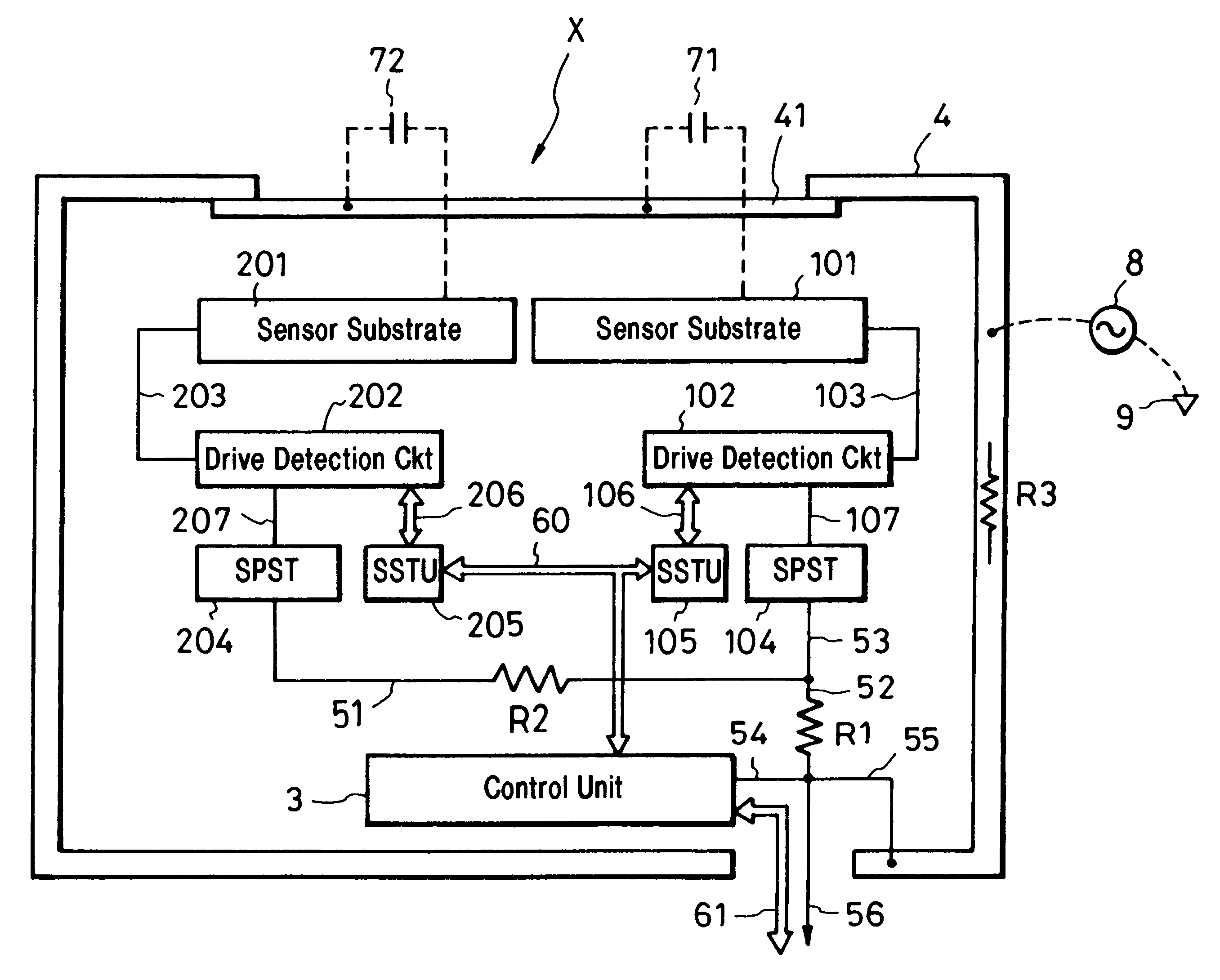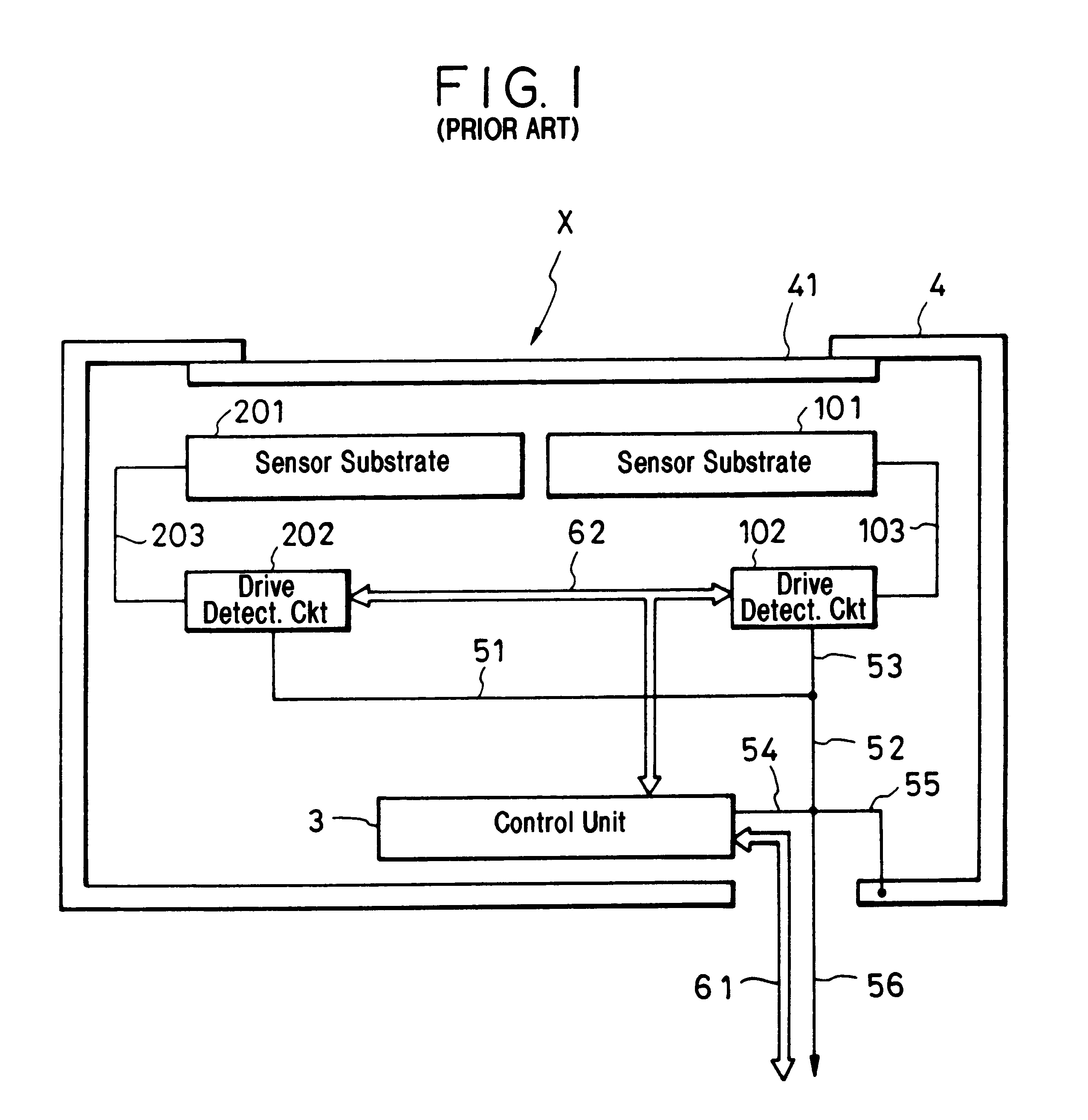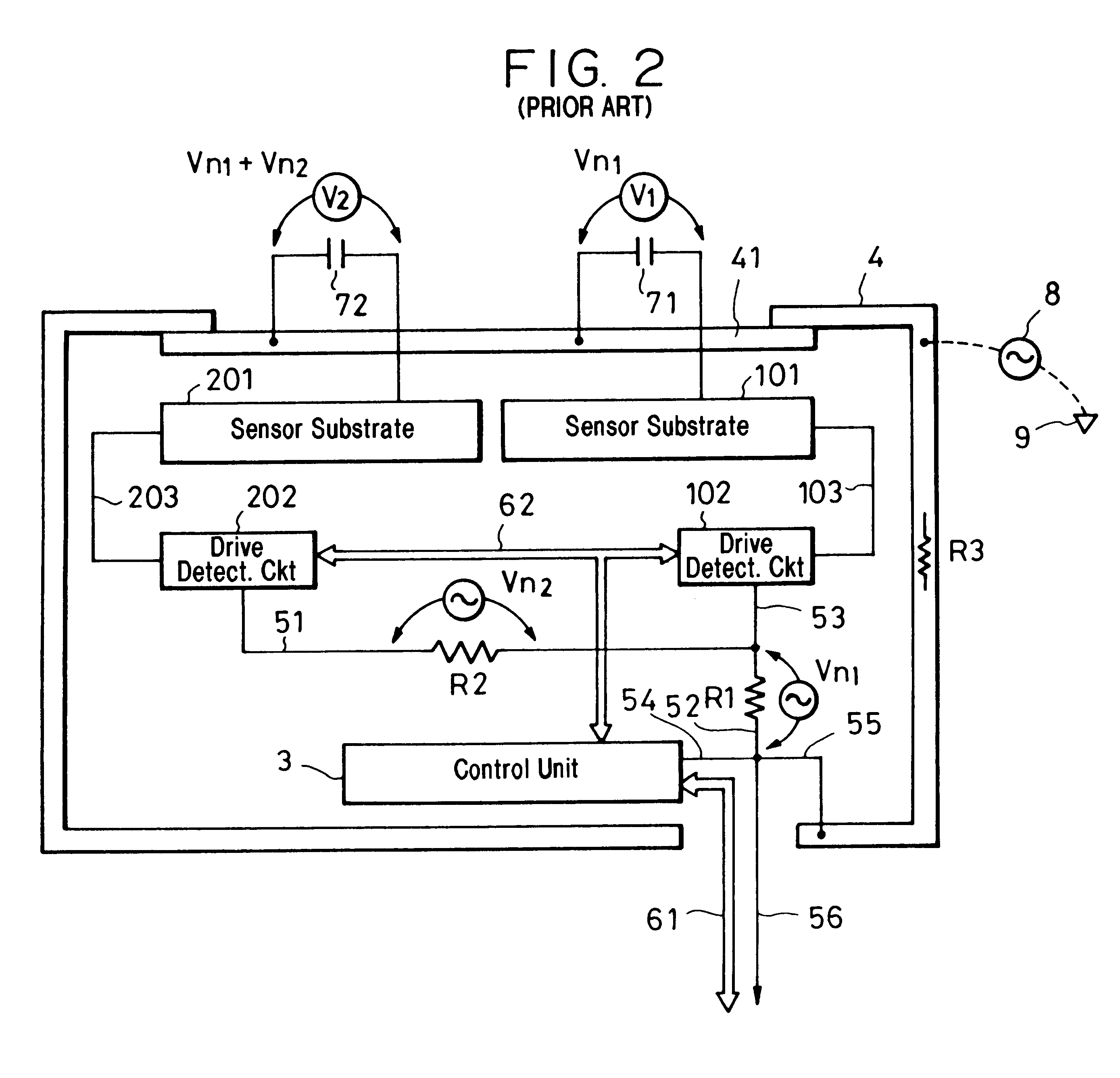Photoelectric conversion apparatus having drive detection capabilities
a technology of conversion apparatus and drive detection, which is applied in the direction of optical radiation measurement, radiation control device, instruments, etc., can solve the problems of wasting time and labor, affecting the quality of images,
- Summary
- Abstract
- Description
- Claims
- Application Information
AI Technical Summary
Benefits of technology
Problems solved by technology
Method used
Image
Examples
Embodiment Construction
FIG. 5 shows configurations of the drive detection circuit 102, the control unit 3, the alternating-currently separation power source transfer unit 104 and the alternating-currently separation signal transfer unit 105 of other preferred photoelectric conversion apparatus according to the present invention. The same components as in FIG. 4 are marked with the same symbols. In FIG. 5, the transformers within the alternating-currently separation power source transfer unit 104 and the alternating-currently separation signal transfer unit 105 have the rotational relation of 90 degrees with respect to the transformers in FIG. 4, and are indicated as 1042, 1054 and 1053, respectively. An operation will be described with reference to the transformer 1042 within the alternating-currently separation power source transfer unit 104. As a characteristic of the transformer, an alternating-currently electrical potential between C and A is transmitted to between D and B. Further, between A and B an...
PUM
 Login to View More
Login to View More Abstract
Description
Claims
Application Information
 Login to View More
Login to View More - R&D
- Intellectual Property
- Life Sciences
- Materials
- Tech Scout
- Unparalleled Data Quality
- Higher Quality Content
- 60% Fewer Hallucinations
Browse by: Latest US Patents, China's latest patents, Technical Efficacy Thesaurus, Application Domain, Technology Topic, Popular Technical Reports.
© 2025 PatSnap. All rights reserved.Legal|Privacy policy|Modern Slavery Act Transparency Statement|Sitemap|About US| Contact US: help@patsnap.com



